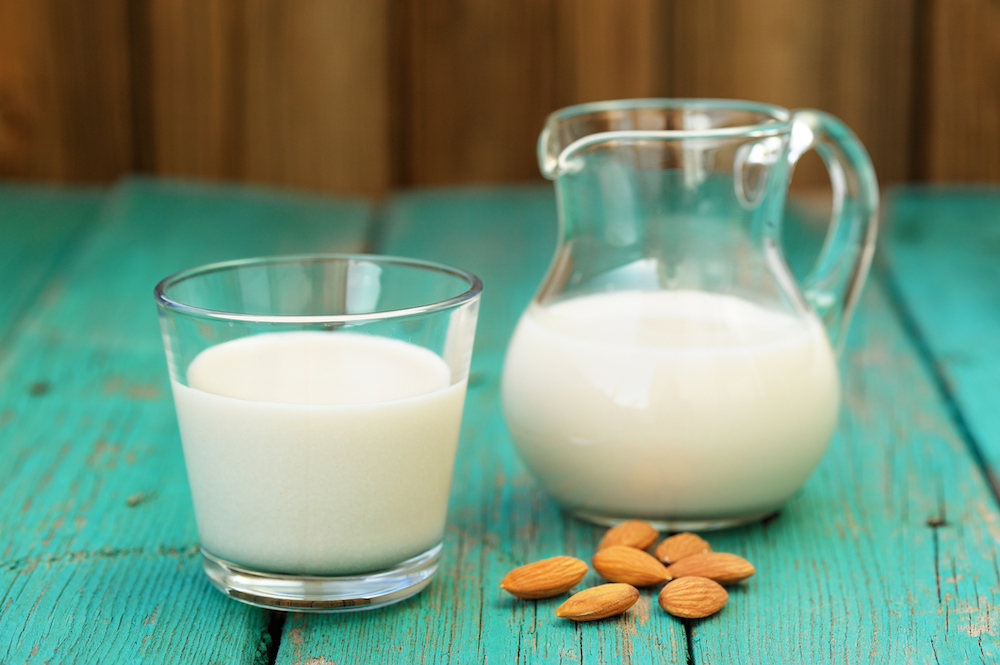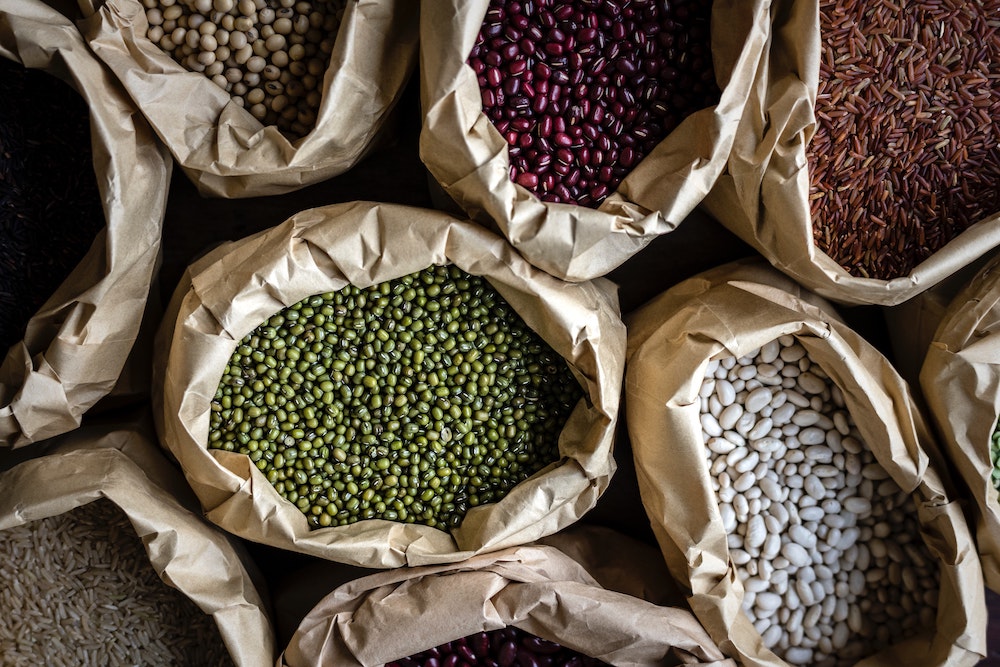Exciting innovation in Plant-based ingredients
For decades, soy and gluten have been the darlings of the meat analog industry. Their protein content, exceptional texture, and affordability as ingredients made them ideal bases for meat alternatives. And it shows – soy protein ingredients, including isolates, concentrates, and flours, were a $9.07B industry globally as of 2017—and are projected to reach $12.8B by 2022.
As a result, until recently, a consumer would be hard-pressed to avoid ingredient lists containing, “soy protein isolate,” and “vital wheat gluten,” while perusing the vegan meat section. But the tide is turning on these industry favorites. Consumers have started to avoid such ingredients due to their allergenicity and their widespread prevalence in food, which seems to give many people the sense of an impending soy overload. A 2017 Mintel report showed that 24% of respondents avoid soy (for allergy/intolerance, health, or other reasons) and 19% avoid gluten for the same reasons.
From a supply perspective, these allergenic ingredients reduce sell-through among consumers and pose risks in a foodservice environment generally. The foodservice channel steers heavily away from allergens to the extent possible, contending not only with serious allergies but also with strict dietary preferences. (A representative of a national food brand once mentioned to me that putting soy in a product meant their company could assume at least a 25% sales reduction for that product.) And the decision to avoid these higher risk ingredients is getting more feasible every day, as more and more options become available that offer the same or similar nutrition, functionality, and price.
We are in an ingredient renaissance of sorts.
Amidst this changing ingredient landscape, a few notable newcomers stand out: algae, mycelium, unique legumes, vegetables, nuts, and grains. These ingredients bring with them a new caliber of “clean” and sustainable, offering functionality without the multi-layered baggage that gluten and soy have come to carry.

Algae has huge potential.
One up-and-comer that holds huge potential is algae. Unique and important are its Omega-3s, which historically have been considered more or less exclusively available through consumption of fish—at least if one is hoping for the fatty acids in remotely decent quantities. The sheer potential of algae is incredible: there are thousands upon thousands of strains, meaning that it’s possible applications and functionality are essentially limitless.
Algae has already helped raise the bar for seafood alternatives by enabling them to stack up much more closely to fish from a nutritional perspective. I foresee that algae will continue to gain traction as a key ingredient that enables plant-based alternatives to deliver clean, sustainable protein and Omegas.
Fungi open up a world of possibility…
Mycelium (the vegetative part of fungus) is another exciting ingredient. It is versatile, nutritionally dense, and can be very sustainably cultivated. MycoTechnology, which plays in this space, has received a great deal of media attention as of late, and rightly so. The company uses a fermentation process with shiitake mushrooms to improve pea and rice protein both functionally and nutritionally. (They also produce a product called “ClearTaste,” from mushroom extract, which is, as they put it, “the world’s first organic bitter blocker.”)
MycoTechnology’s innovations illustrate a key concept: not only are these new ingredients amazing in and of themselves, but they open up a world of possibility through their ability to improve and build upon existing ingredients.

Not only are these new ingredients amazing in and of themselves, but they improve and build upon existing ingredients.
One wonders, in the wake of pea protein’s explosive growth (Mintel says that the number of products with pea protein grew 200% between 2014 and 2017) what the next groundbreaking legume will be. Two that I predict will gain ground are chickpea flour and mung beans. While chickpeas themselves are not new, their use in flour opens up new possibilities as a fiber-rich ingredient that may well start appearing in more meat alternatives. Mung beans, though as yet largely unfamiliar to the American public, are high in protein, fiber, antioxidants, and phytonutrients. I anticipate that we will see mung beans become a popular add-in for meat alternatives.
Mung beans are high in protein, fiber, antioxidants, and phytonutrients.
Another frontier in plant-based alternatives turns to the familiar – whole fruits and vegetables. Our client and portfolio company, Ocean Hugger Foods, uses fruits and vegetables as the base for its seafood alternatives, and through its proprietary process is able to remove the characteristic plant flavor (ex. removing the acidity from tomato and the bitterness from eggplant). The process also renders the texture of the plants remarkably close to the animal protein they aim to mimic. To accommodate consumers who shy away from unconventional or unfamiliar new products (i.e. algae & mycelium), such easy-to-understand ingredients are a promising avenue to explore.
“Watching someone try our products for the first time is always a joy. They may be skeptical at first due to the unfamiliarity, but the reassurance often comes in telling them that our products are whole fruits and vegetables with a couple of other simple ingredients.”
~ Ashley Bouldin, VP of Global Marketing at Ocean Hugger Foods
Can we milk it?
Nuts are another category that has been disrupted lately, largely in relation to plant-based milk, which is a massive $1.9B industry in the US alone. Almonds, it turns out, were just the tip of the iceberg in plant-based nut milks. As entrepreneurs and big brands scoured the nut kingdom for exotic new options and asked, “can we milk it?” The answer proved to be a resounding “yes!” Now cashews, peanuts, hazelnuts, walnuts, pistachios, brazil nuts, and macadamia nuts are being turned into milk. (Not to mention black sesame seeds, peas, and hemp.)
And then there came the humble oat, which has arguably been more revolutionary to the plant-based milk scene than any other “new” ingredient.

Just think of the Oatly shortages. What other milk substitute brand, throughout the ages, has managed to reach cult status?
And what’s especially fascinating about oat milk is that, actually, it’s not new. Oat milk has been around for decades. But Oatly created a deeply appealing brand with a great tasting product and brilliant channel strategy, at a time when the market was ripe for a dairy-free, gluten- free, nut-free milk. It is well worth noting that ingredients need not necessarily be “new,” so much as they need be reinvented through exceptional products that arrive at the right time, in the right place, and for the right audience.
“The market was ripe for a dairy-free, gluten- free, nut-free milk…”
There is no doubt that we are in an ingredient renaissance of sorts. Scientists and food companies are pushing the limits to find and use the most diverse, allergen-free, sustainable, unprocessed ingredients, in response to both consumer and environmental needs. Some of these ingredients are the latest and greatest discoveries, some have merely been reinvented (like the oat), and still others have been created to work in concert with and improve old favorites.
It is thrilling to see these boundaries being pushed so far and so quickly. And it is equally thrilling to consider what the next five or ten years will hold in ingredient innovation.
